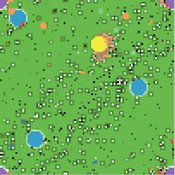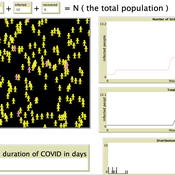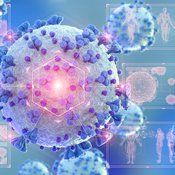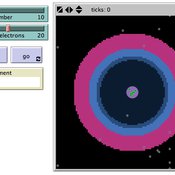
Kit Martin
Affiliations Personal homepage Professional homepage ORCID more infohttps://orcid.org/0000-0002-2122-8026
GitHub more info
I have a strong background in building and incorporating agent-based simulations for learning. Throughout my graduate career, I have worked at the Center for Connected Learning and Computer Based Modeling (CCL), developing modeling and simulation tools for learning. In particular, we develop NetLogo, the gold standard agent-based modeling environment for learners around the world. In my dissertation work, I marry biology and computer science to teach the emergent principles of ant colonies foraging for food and expanding. The work builds on more than a decade of experience in ABM. I now work at the Center for the Science and the Schools as an Assistant Professor. We delivered a curriculum to teach about COVID-19, where I incorporated ABMs into the curriculum.
You can keep up with my work at my webpage: https://kitcmartin.com
Research Interests
Studying the negative externalities of networks, and the ways in which those negatives feedback and support the continuities.
Peer reviewed Umwelten Ants
Kit Martin | Published Thursday, January 15, 2015 | Last modified Thursday, August 27, 2015Simulates impacts of ants killing colony mates when in conflict with another nest. The murder rate is adjustable, and the environmental change is variable. The colonies employ social learning so knowledge diffusion proceeds if interactions occur.
Introductory SIR Model
Kit Martin Amber Cesare Matthew Johnson | Published Tuesday, September 28, 2021This is a basic Susceptible, Infected, Recovered (SIR) model. This model explores the spread of disease in a space. In particular, it explores how changing assumptions about the number of susceptible people, starting number of infected people, as well as the disease’s infection probability, and average duration of infection. The model shows that the interactions of agents can drastically affect the results of the model.
We used it in our course on COVID-19: https://www.csats.psu.edu/science-of-covid19
COVID-19 SIR with Public Health Interventions
Kit Martin Amber Cesare Matthew Johnson | Published Tuesday, September 28, 2021This is an extension of the basic Suceptible, Infected, Recovered (SIR) model. This model explores the spread of disease in two spaces, one a treatment, and one a control. Through the modeling options, one can explore how changing assumptions about the number of susceptible people, starting number of infected people, the disease’s infection probability, and average duration impacts the outcome. In addition, this version allows users to explore how public health interventions like social distancing, masking, and isolation can affect the number of people infected. The model shows that the interactions of agents, and the interventions can drastically affect the results of the model.
We used the model in our course about COVID-19: https://www.csats.psu.edu/science-of-covid19
Due to teacher requests to represent changes in atomic radius, we developed a visualization of the first 36 elements in Netlogo
Under development.



